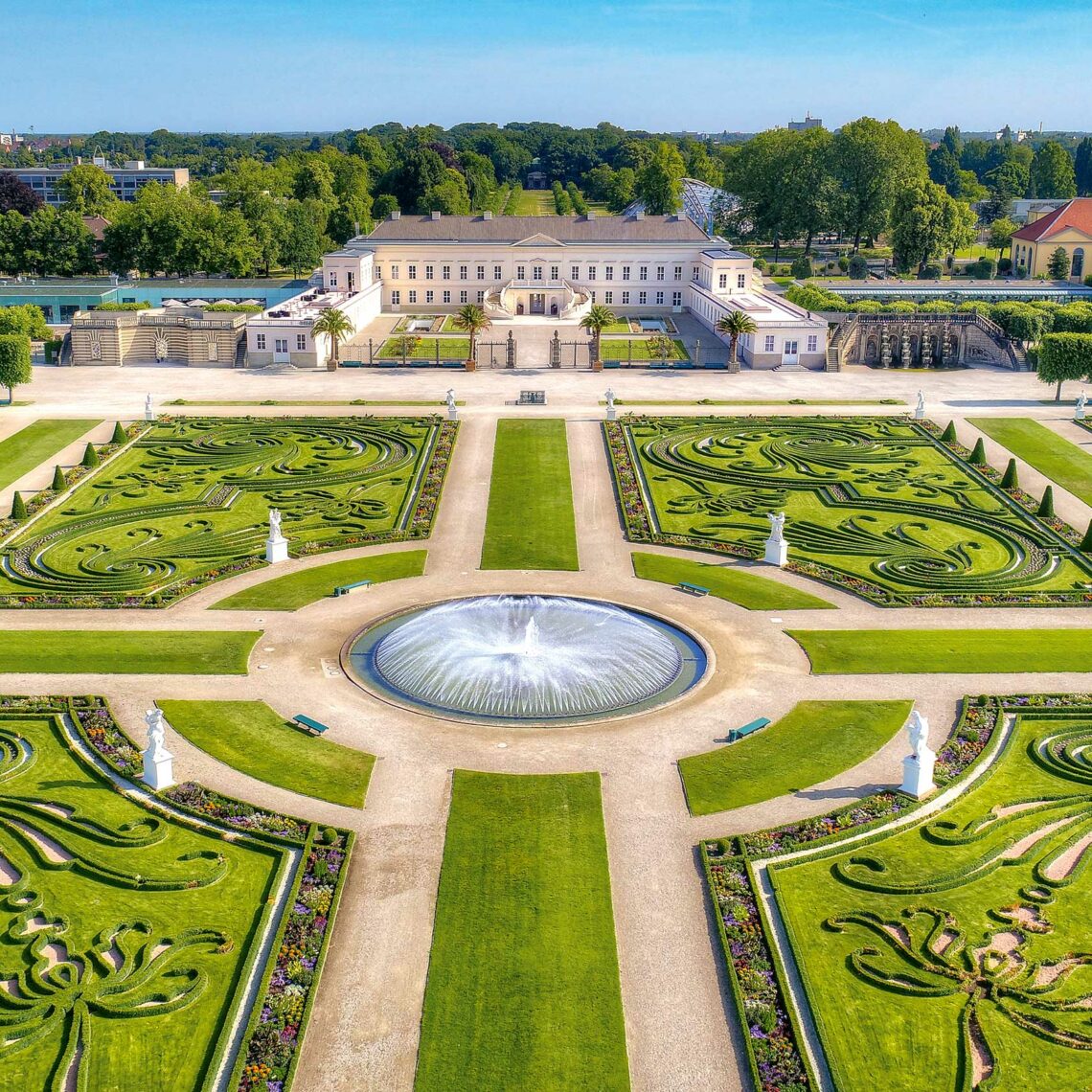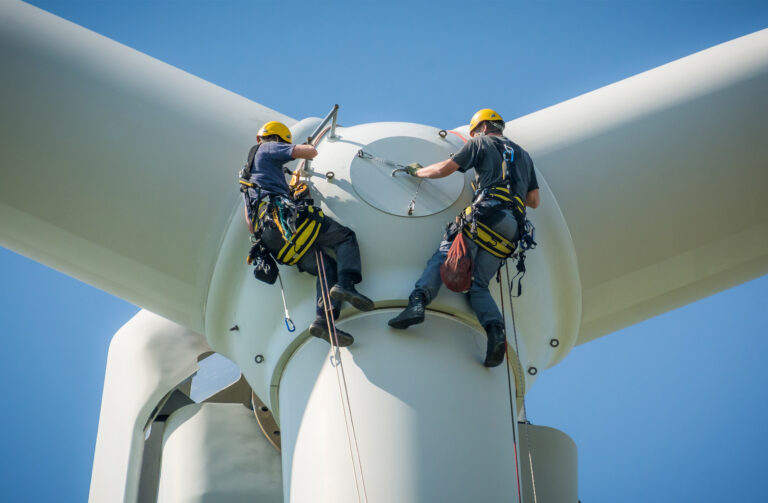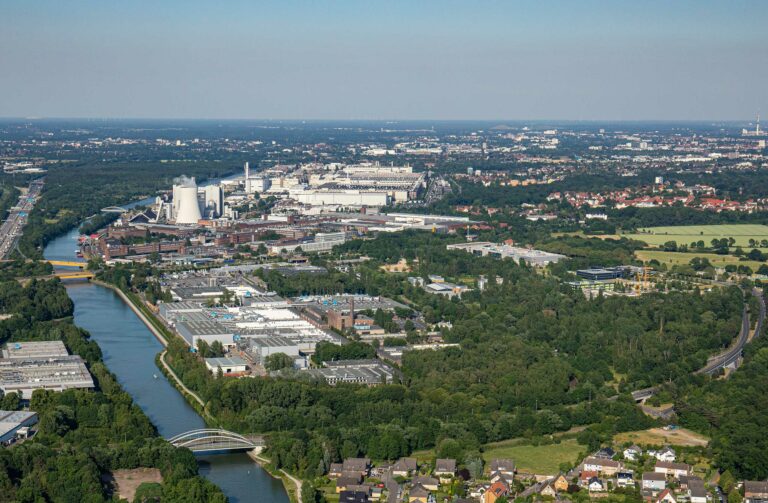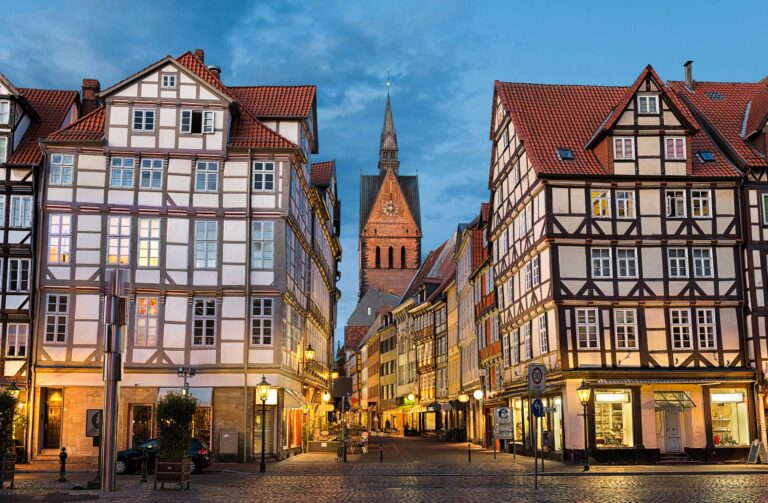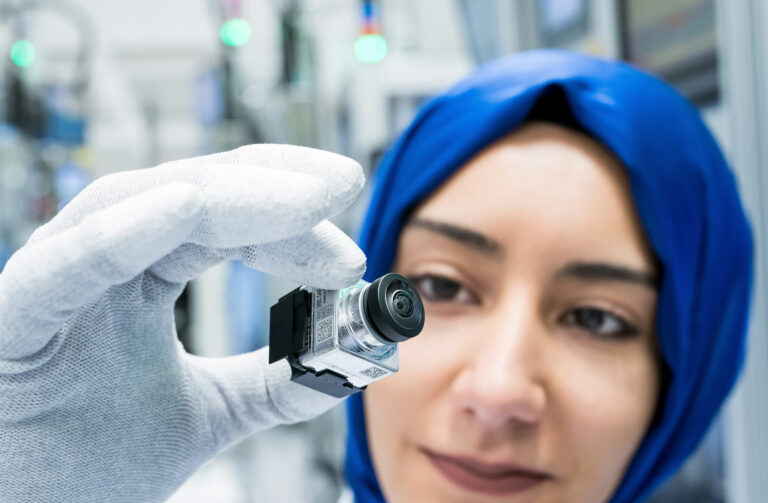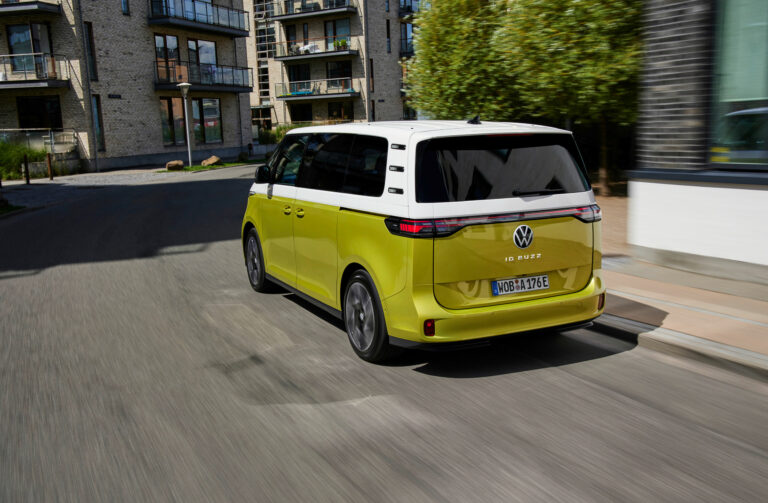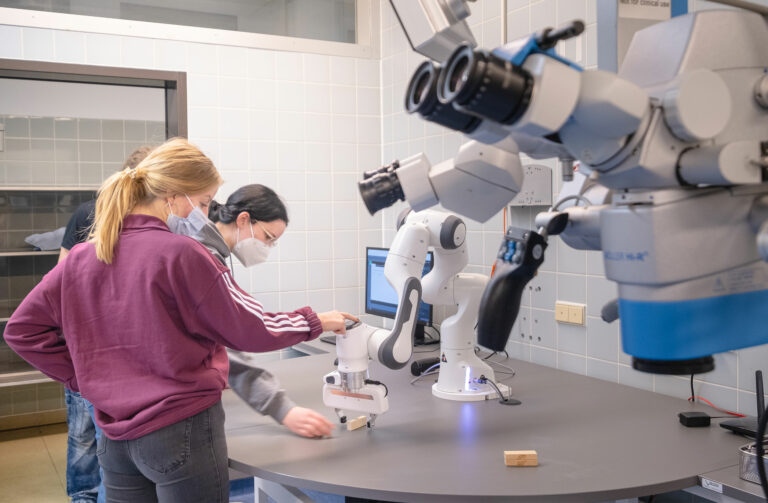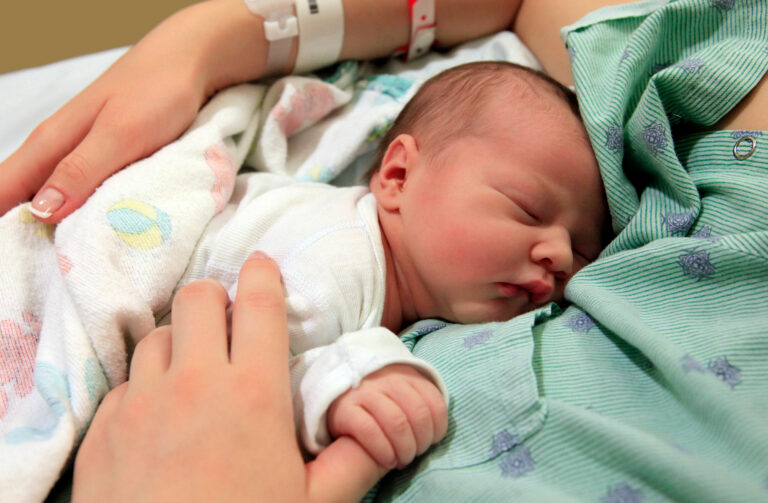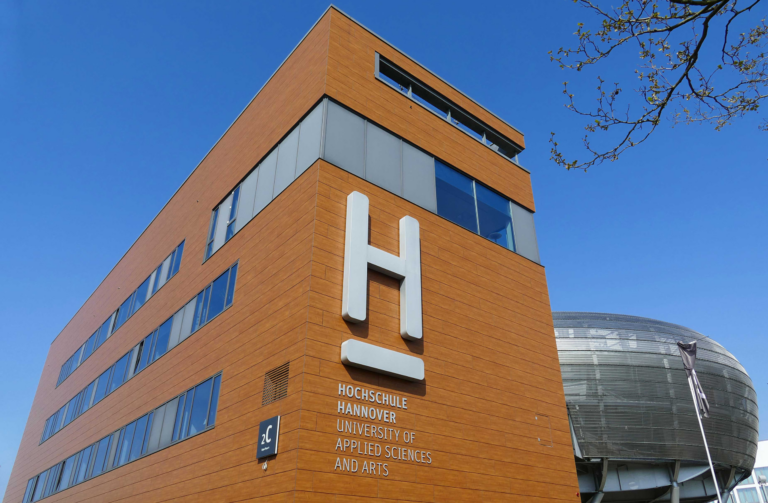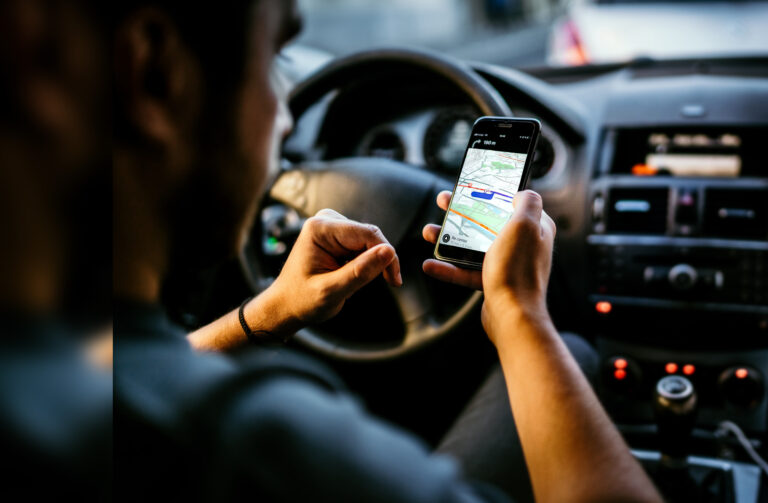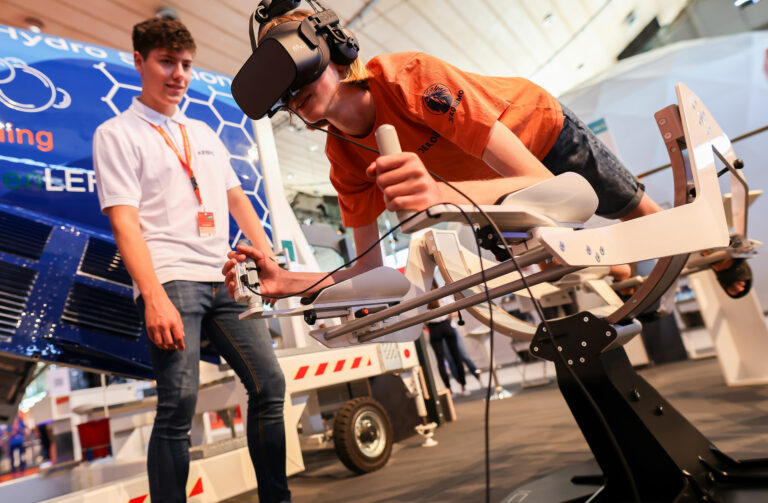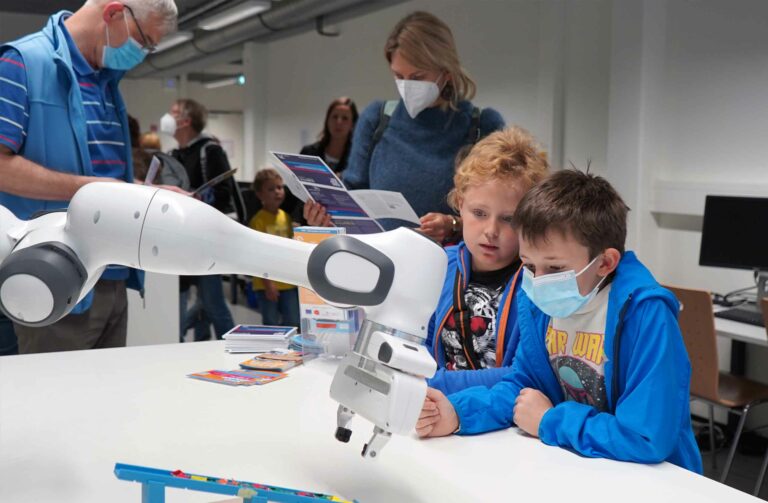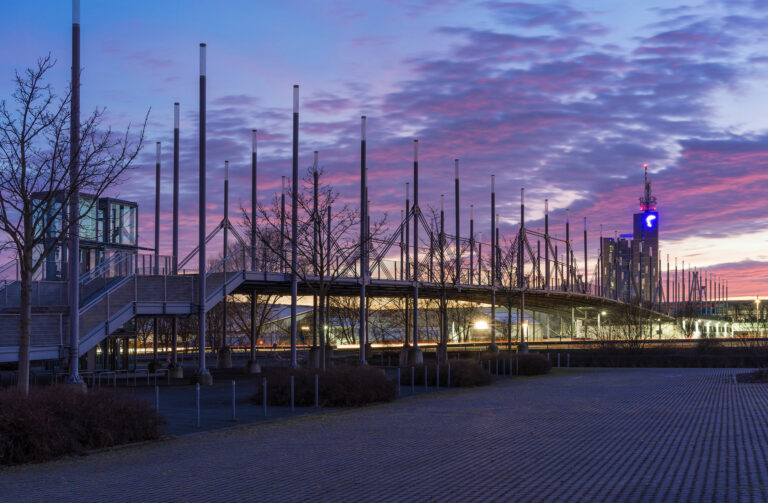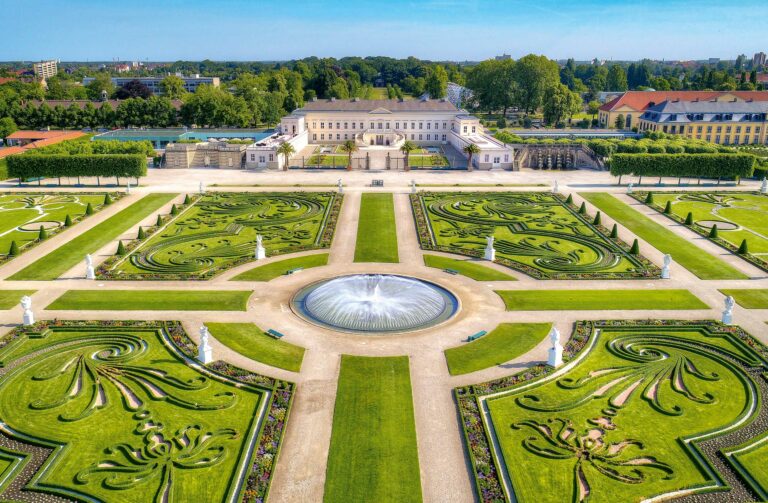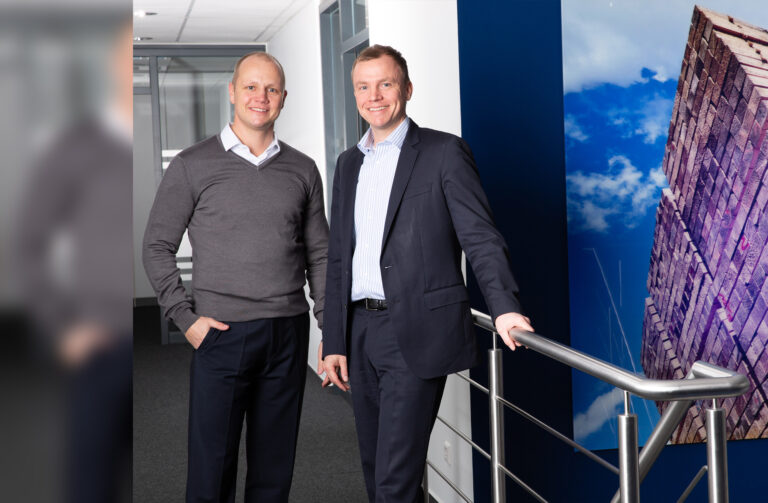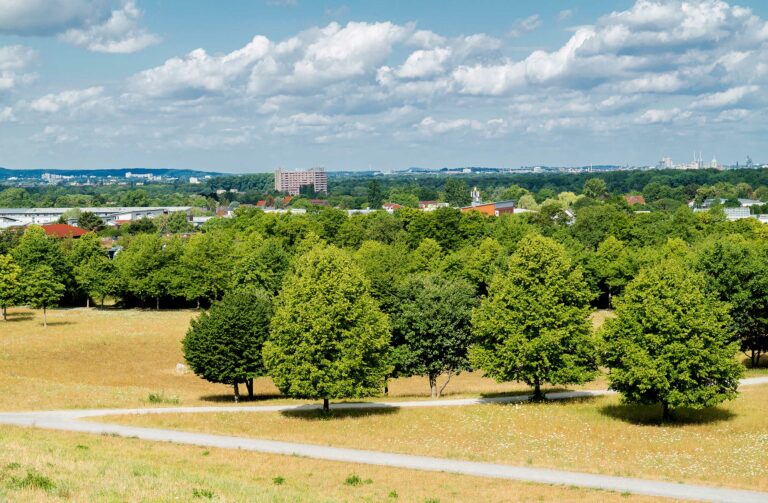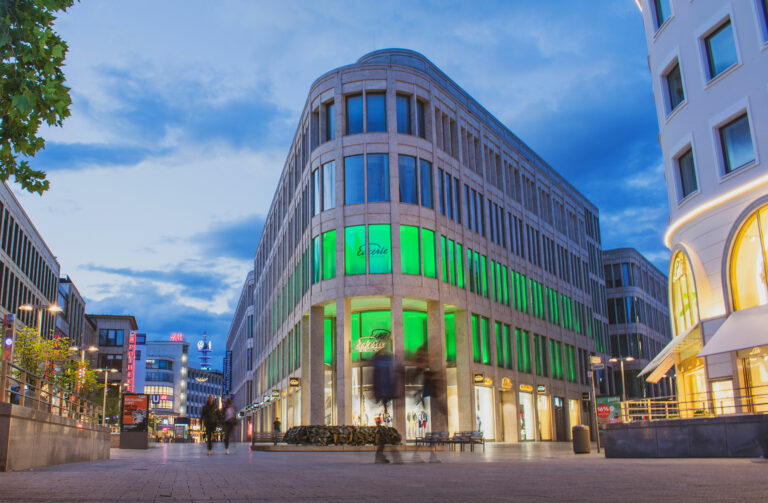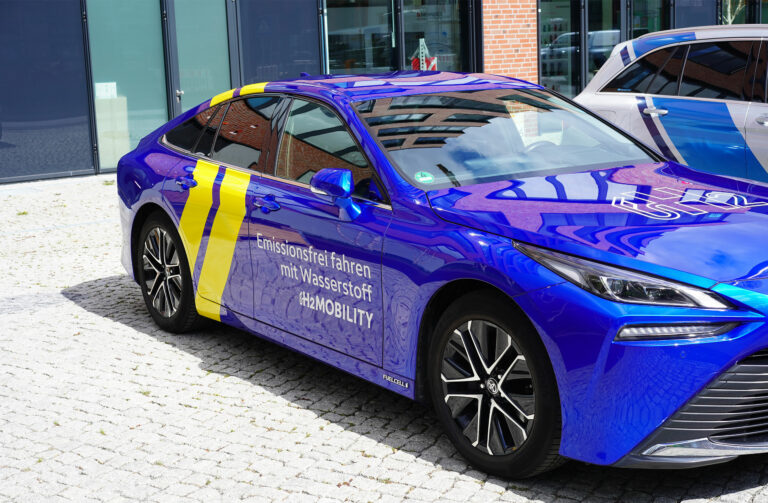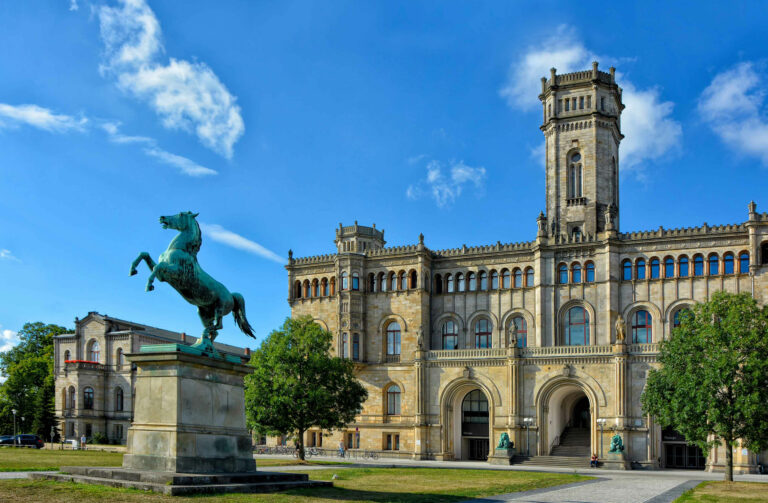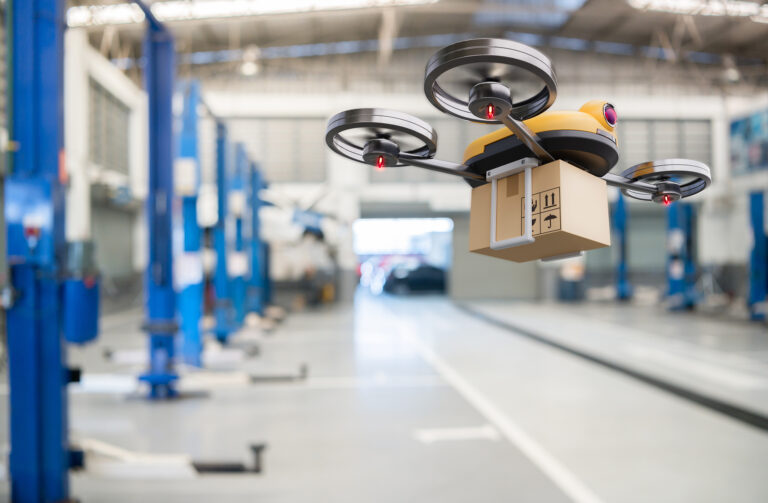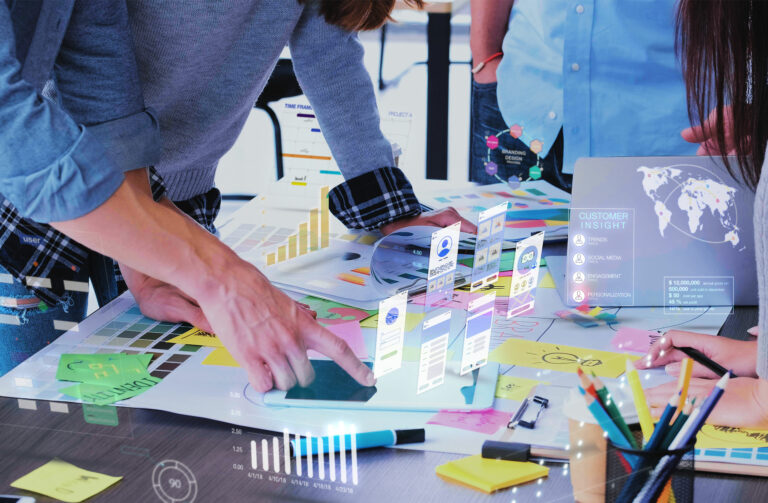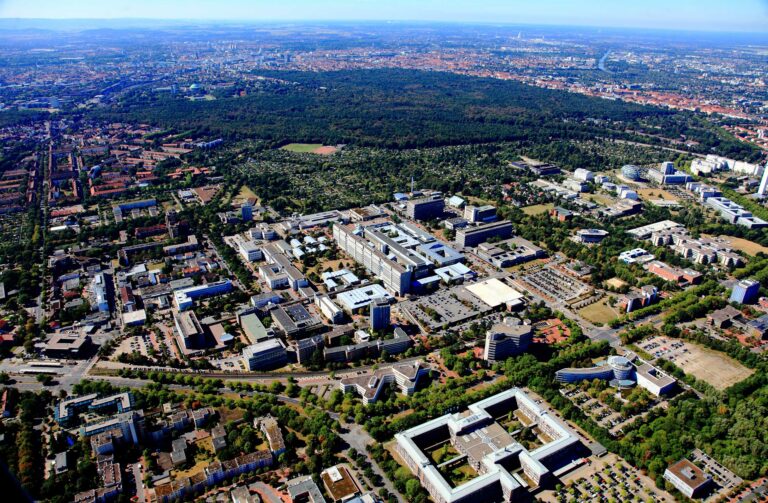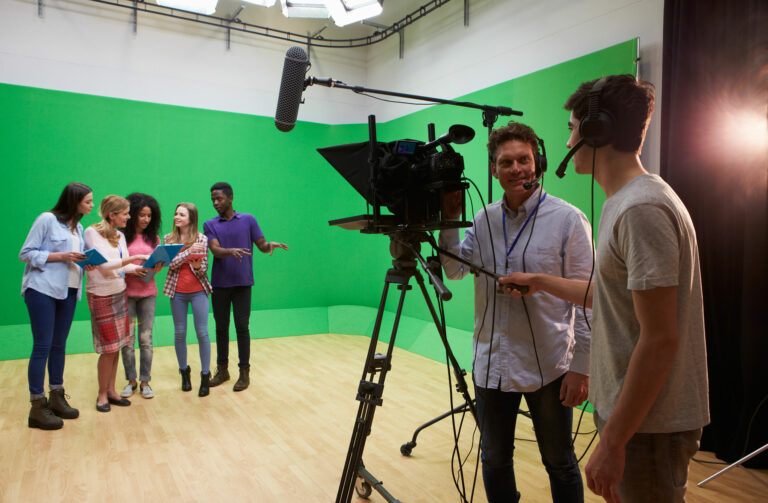Curtain up for creativity
The cultural diversity of the state capital resembles a huge mosaic. It is a bright composition combining many unexpected facets that surprises even insiders. Please zoom in!
“What kind of a world do we want to live in?” Surely only the actual answers can be more fascinating than this current question. It is a question on the minds of the Schauspiel Hannover (state theatre), in the current season. Family, future and resistance are just some of the buzzwords that are mentioned by director Sonja Anders. Public discussions look at meaning of life, doing a stock-take of our existence and examining the prospects that are revealed. The result provides material not only for stage performances but also for formats that encourage audience participation. Festivals, universities and independent theatre groups are also involved. Hannover practices a fresh approach, shakes people up, animates them and asks awkward questions, whilst also making people have a really good laugh. The city has not always been like that.
Besides the Schauspielhaus, the historical Cumberlandsche Galerie with its theatre bar and the Ballhof Eins and Zwei in the old town offer fascinating performances. The neo-classical opera house also presents stimulating productions, with the opera director and ballet director making every effort to keep the audience fascinated. In 2021, Marco Goecke was even declared “choreographer of the year”. He is an artist full of sparkling creativity with a feverish, pulsating, bird-like style that is characteristic of his very own dance language. What an asset! In the previous year, opera director Laura Berman had already taken the prize as best opera house, with the jury applauding the fact that she gives more priority to quality than to alleged big names.
Culture is fundamental for mental health and survival
In 2021, the little Theater an der Glocksee received the Federal Theatre Prize for its “outstanding artistic programme” and the resourceful outdoor and online formats it presented during the Covid-19 pandemic. There have also been other demonstrations of how creative theatre people can be. Sportsgrounds, beaches and even Wilhelmstein island in Steinhuder Meer became venues when it was important to be outside. The Eisfabrik in the Südstadt with its photo gallery, the Kleckstheater or the Theaterwerkstatt in the Kulturzentrum Pavillon are just a few more examples of culture being brought to life. And that is precisely what so many people have rediscovered, after suffering the constraints of working from home and contact restrictions: culture is fundamental for mental health and survival.
One event where this is very evident is the annual KunstFestSpielen Herrenhausen. Time and time again, director Ingo Metzmacher succeeds in putting together new combinations of art, music and international stars. It is usually in the month of May that the Herrenhäuser Gärten and other venues and unusual places in the city find themselves submerged in a magical setting. Furthermore, the Herrenhäuser Gärten are a work of art in their own right. The Große Garten, with its baroque shapes and huge fountain that is fed by the newly renovated waterworks, stands out once again with the oldest garden theatre, which has just been redesigned according to old records. Concerts in the orangery and gallery are of international renown, including the GOP winter variety show. The Berggarten is a special treasure, with its biodiversity, the rare trees and sumptuously planted greenhouses.
People are fascinated by the Easter Dance Days at the opera or the International Choreography Competition. Two private theatres in Georgstraße also focus intensively on their guests: the GOP-Varieté-Theater with its shows, artists and comedy stars, and the Neue Theater with comedies and farces. The TAK – Theater am Küchengarten in Linden presents cabaret with great finesse. Plenty more additions could be made. Above all, it is the creativity and great personal commitment that is so striking – now and in future too.
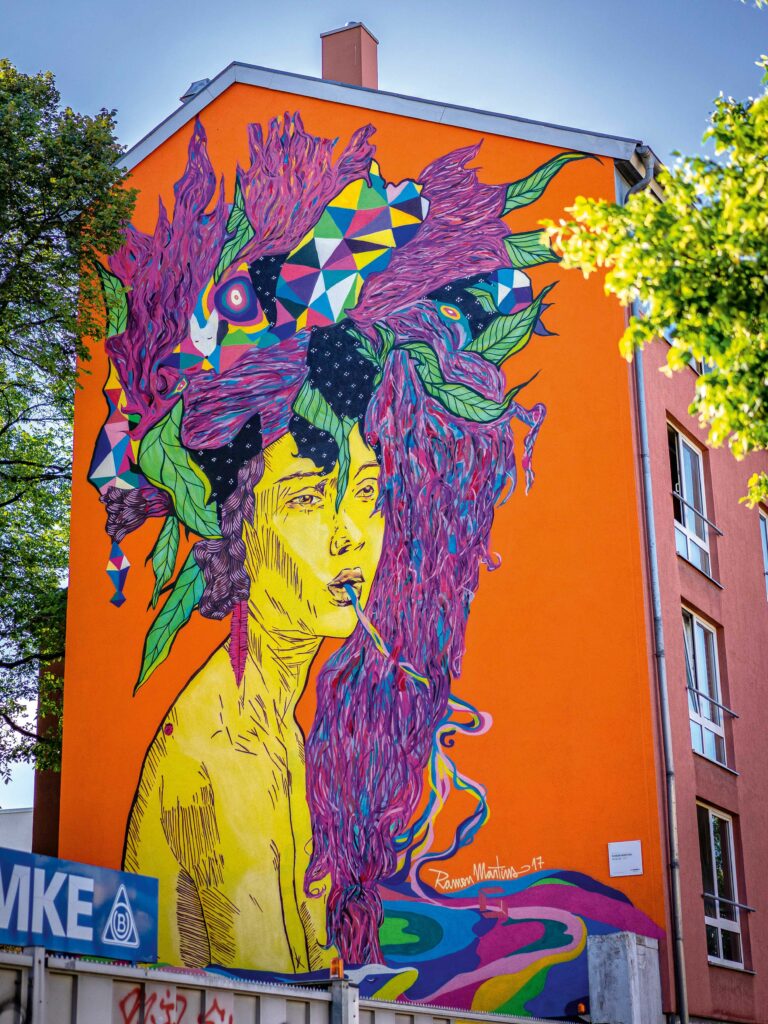
Trains the senses and warms the heart
Here is a brief look at the top events: Maschseefest is the biggest event in North Germany and consists of three weeks of holiday feeling with music and international cuisine. Schützenfest Hannover is the largest marksmen’s festival in the world, a mega event with a long tradition that is not the slightest bit outdated. 10,000 people and more than 40 carriages and floats are involved in the Schützenausmarsch procession alone. The International Firework Competition sets the sky glowing over the Großer Garten to the sound of music that warms people’s hearts and takes place repeatedly between May and September. The Kleine Fest in the Großen Garten has 30 stages presenting cabaret to astound people and capture their hearts. The Hannover Marathon is a race and community event. Football team Hannover 96 play their home games in the football stadium at Maschsee. Football always draws people in, but Hannover also has handball, water polo and darts teams that play in the upper leagues. The RegionsEntdeckertag is an opportunity to discover the unknown corners of the Region Hannover which, after all, is nearly 2,300 square kilometres in size (and thus larger than Monaco and the Vatican together). The Lister-Meilen-Fest celebrates neighbourhood culture, and the Christmas Market sets the old town in a completely different light and enchants visitors with the scent of baked apples and real pine forest.
Become part of city life: from Graffiti to Leibniz
“Culture for free” is a buzzword in Hannover, encouraging people to find their own access to art whilst becoming immersed in city life. The first example consists of street art & graffiti, which is a highlight with artists painting façades as eye-catching stimulation. Houses on Engelbosteler Damm in the Nordstadt, from Raschplatz to Volgersweg, bunker walls at Welfenplatz or all round Glocksee in Linden are striking, upbeat evidence of this astonishing art form.
Another tip is the Urbane Kunstwoche in August. The city is turned into a gallery, with huge murals being created right in front of the guests. Attending this in person is an exciting adventure. Internationally renowned artists are featured in Hola Utopia and Urban Nature.
The second example takes people on a tour of the city that follows in the footsteps of the universal scholar Gottfried Wilhelm Leibniz. A folding map makes it easy to find the Leibniz-Tempel in the Geor gengarten and also shows the location of the memorial that has all the zeros and ones. The all-round genius lived in the city for 40 years. His 200,000 pages of letters with 1,100 correspondents in 16 countries are still being evaluated today.
Then of course there is the Red Thread, that is actually painted on the ground throughout the city centre, guiding visitors to the main attractions. The tour invites visitors to see what they can find among roughly 200 objets d’art in public spaces. Best of all is that you never walk alone.
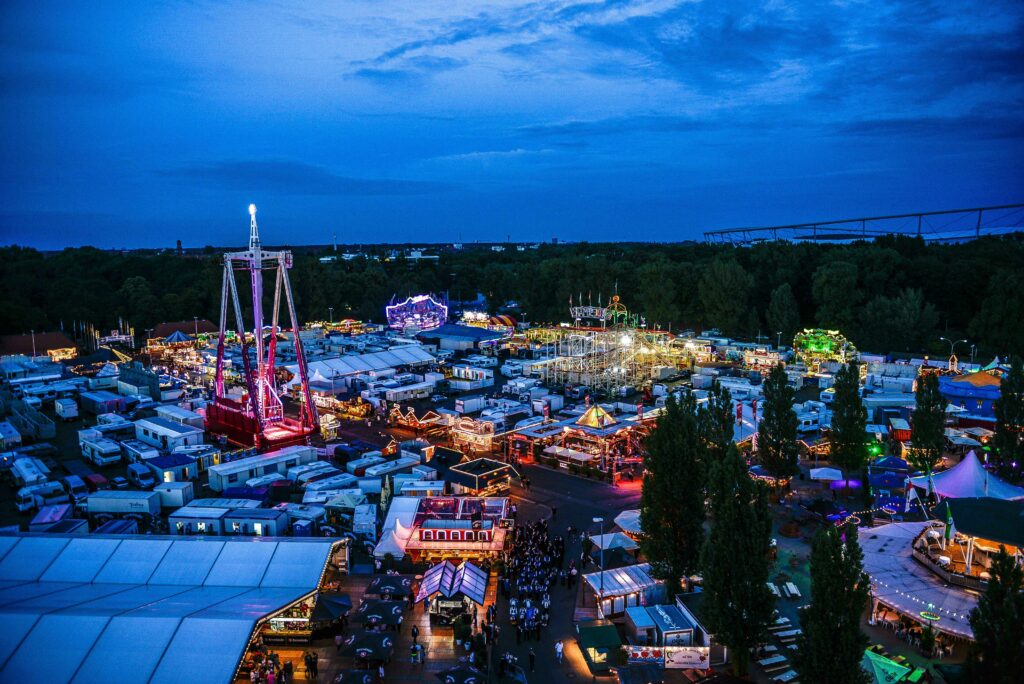
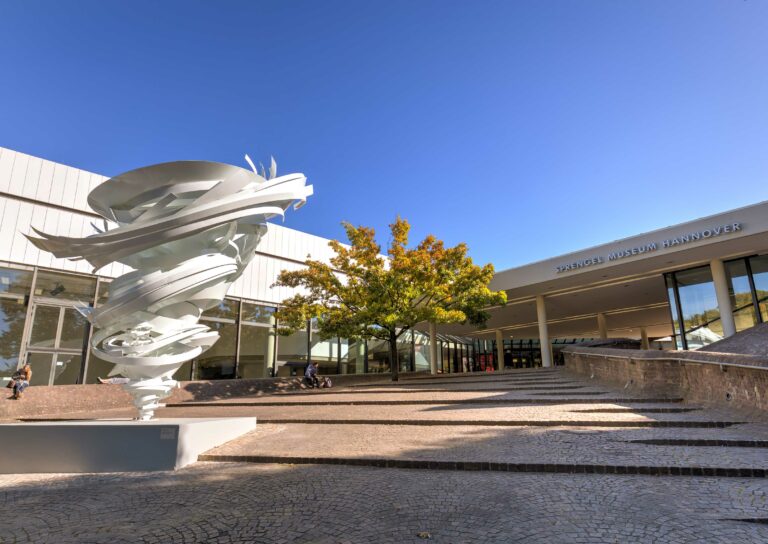
New awakening in the museums
You might expect to find the inventor of comics somewhere in California. In fact, the first comics were drawn and written by Wilhelm Busch. “Max and Moritz” are absolute classics. This is precisely why the venerable Georgenpalais of the Georgengarten in Herrenhausen houses the “Wilhelm Busch – German Museum of Caricature and Drawings”, for Busch lived in the city for a while. Alongside the works of Wilhelm Busch, the museum also presents changing exhibitions that have featured all the big names of the art, from Loriot to Tomi Ungerer and Peter Gaymann (the one with the hens) to Marie Marcks or Ronald Searle.
The Sprengel Museum at Maschsee was originally based on the art collection of Bernhard and Margrit Sprengel, chocolate manufacturers from Hannover. It presents works of classical modern art from Pablo Picasso to Otto Dix to Paul Klee or Emil Nolde, as well as Henry Moore or Gerhard Richter. By contrast, the historical art nouveau public baths are located at the Anzeiger Hochhaus building (designed by Fritz Höger) and are home to the Kestnergesellschaft – one of Germany’s largest art associations.
It is quite amazing to see how the Landesmusum Hannover, Lower Saxony’s largest state museum right next to the Staatskanzlei, has managed to shake off its formerly outdated image. For one, the neo-Renaissance building has been completely renovated. But far more impressive is that the museum has been reorganised into specific worlds. The NaturalWorlds exhibition offers many different views of the world of nature, where the focus, for once, is not on people. By contrast, the PeopleWorlds exhibition presents a vivid look at history and gives a warning at the same time. The DigitalWorlds exhibition is practically a guide through a journey in time, featuring 111 objects that can be viewed from every device, extending from the fossil of a fan palm to Kloster Walkenried in the Harz mountains. Magnificent!
The August Kestner Museum next to the New Town Hall is a major attraction. Kestner was a diplomat from Hannover and an envoy to Rome who accumulated a large collection of art and antiques. He has nothing to do with the author Erich Kästner. The Kestner Gesellschaft, the Schloss Marienburg or the Museum Schloss Herrenhausen are other wonderful places for looking and thinking.
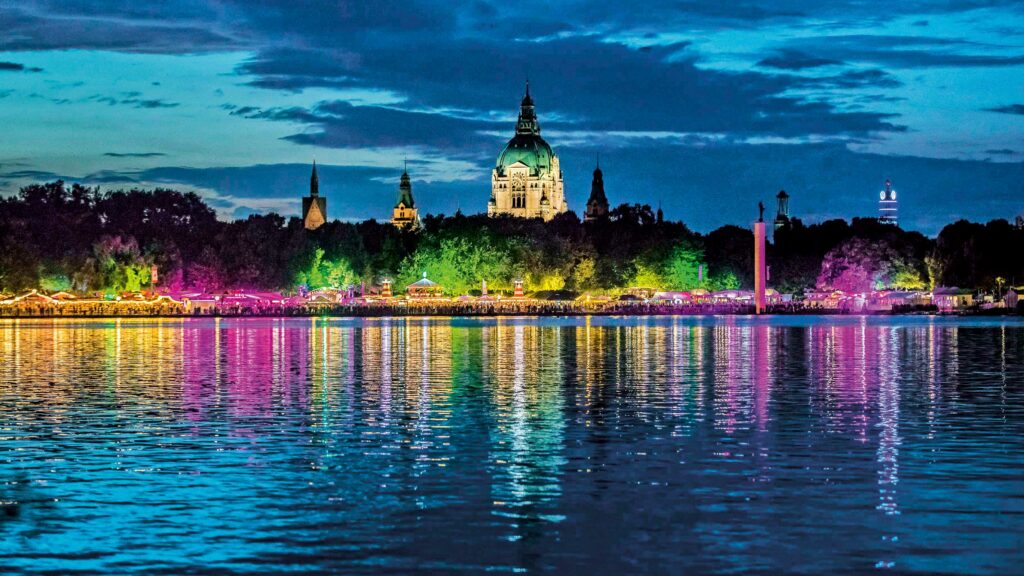
The legendary “Apollo” cinema and ingenious music events
The “Apollo” cinema deserves a mention because it is the oldest cinema in North Germany that is still intact today. It started showing films in 1908. 300 amazed guests came to the former ballroom to watch silent movies with live piano accompaniment. In 1973, the future cinema magnate Hans-Joachim Flebbe came on the scene and rescued the cinema by showing entertainment films. The “Apollo” was thus Germany’s first repertory cinema. The Astor Grand Cinema Hannover is still the cinema of choice in the city. It has ten different screens and more than 2,100 seats, which are comfortable above all else. A great experience. It is also the first choice for events and movie premières.
There are so many concerts here in the city and region that anyone would think people here dance all the time. Tens of thousands of people come to the EXPO-Plaza for the NDR-Plaza-Festival. World stars regularly appear to full houses in the football stadium and the exhibition grounds. On Ascension Day, Hannover swings to jazz music at the Trammplatz in front of the New Town Hall, hosted superbly by the legendary Jazz Club Hannover (at home in a basement at Lindener Berg. On Midsummer’s Eve (21 June), bands perform on many pop-up stages in the city centre for the Fête de la Musique, giving people some idea of the sound of the City of Music. Hannover has held this UNESCO title since 2014. At the Masala Weltbeat Festival, the whole region seems to be playing the drums, with many venues offering international music. Small, excellent concerts in churches, gardens or barns are what make the Kultursommer-Festival popular. Classical music in Herrenhausen, at the NDR broadcasting centre or in the HCC (Hannover Congress Centrum) are other first-rate musical events that audiences will remember for a long time.
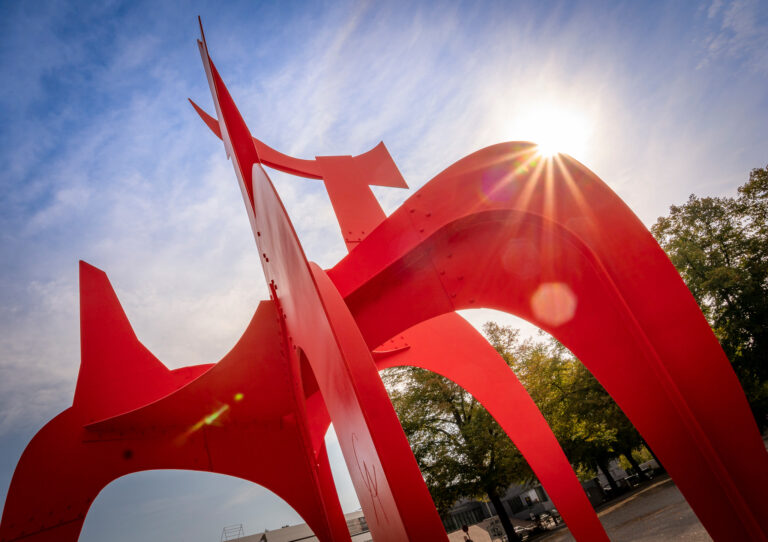
Liveable and lovable – thanks to the quality of cultural life
It all goes to show that Hannover leads the field with everything that means more qualify of life. The things that make the city and region liveable and lovable are all facets of this cultural diversity. They include inventive music performances and entertaining theatre that doesn’t preach at people but encourages them to appreciate and contemplate. Then there are the museums whose contents and concepts fill people with amazement. The art and culture scene is bubbling over with ideas – so it is worth keeping an eye on the programmes. There are so many new things to be discovered!
Header picture: HMTG

